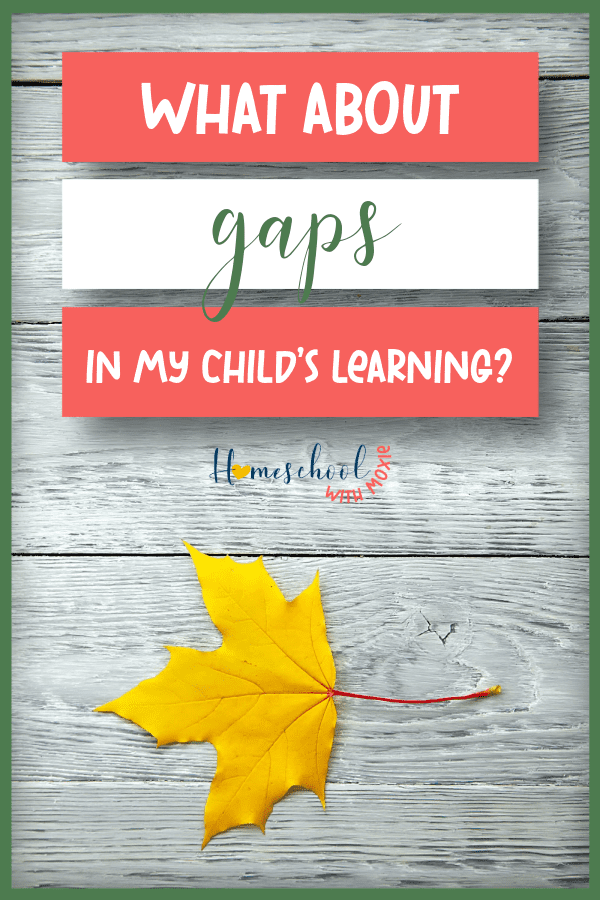What about gaps in my child’s learning? Are my kids doing enough? Do I have to follow the public school schedule?
New homeschool parents have so many legitimate questions! And sometimes it’s hard for new homeschool parents to find peace in their choices.
In the middle of a rough homeschool day or rough season, wouldn’t it be nice to sit and chat with a veteran homeschool parent? Those that have graduated kids from their homeschool have lots of wisdom. They didn’t always do it perfectly, but they have the benefit of looking back over decades and reminding those of us in the trenches what really matters.

My posts contain affiliate links.
I found this type of encouragement recently while reading an interview with Michael Farris. As a homeschool parent and co-founder of Homeschool Legal Defense Association, Mr. Farris spoke candidly about homeschool essentials.
We are great at heaping onto ourselves burdens of curriculum, pressure, guilt, and comparison. If your homeschool is in need of some peace and confidence, pay attention to these three secrets.
Plus we’ll answer some of those common questions from new homeschool parents.
1. Focus on the tools of learning
How many of us stress that our children are going to have gaps in their education? What if they don’t finish that biology course? Will they grow up to be literate adults if they don’t read every title on the recommended literature list? What if I’m not good at math, yet I’m the homeschool math teacher? Ahhh!
Mr. Farris gently reminds us that no one will ever master it all by twelfth grade.
Here is what we should focus on:
There are two aspects of home education that need to be mastered in K through 12: language and numbers. Those are the tools of learning. You need to master words, and you need to master numbers. Everything else is exposure.
Phew! So, on a “bad” day when you can’t possibly get to everything on your list, focus on the basics. Words and numbers.
You’re not going to master . . . anything . . . in the K-12 sequence. You’re going to give your kids exposure. Exposure is good, and exposure to a broad range of things is good. But you don’t have to master all this stuff. As long as people understand this, they can avoid a lot of sleepless nights about some of the details.
What about gaps in my child’s learning?
One of the main concerns of new homeschool moms is that their children will have gaps in their learning if they homeschool.
On social media, homeschool moms were asked: “What are the things you are most concerned about with homeschooling?”
And in their own words, these are two of the responses that sound very familiar to what homeschool parents have told me over the years.
- Not being able to afford the best curriculum or leaving out important concepts that she would learn in school.
- That I will fail to teach something that they’ll actually need to know. You know—like traditional schools do.
The first realization is that you need to acknowledge the reality of the situation if you have this concern: Yes, your child will have gaps. Everyone has gaps!
Your kids will never learn everything they need to know. Did you? If you went to public school, did you have gaps? Yes.
So, what’s the solution if you’re still concerned about gaps in learning?
- focus on raising lifelong learners
- embrace a passion-driven education
- fan the flames of curiosity in your kids
- focus on the tools of learning (see Michael Farris’ quotes above)
- buy a curriculum that is planned out for you with learning objectives if you want that structure
- download a scope and sequence from your state for that subject & grade level if you want to see what kids in schools are learning
- purchase “What Your 3rd Grader Needs To Know” by E.D. Hirsch (or whatever grade your child is in) to have an overview of the main learning objectives
But, even if you choose to follow an official curriculum or consult a scope and sequence, don’t forget that no child is standard! Each child has unique learning styles and strengths and weaknesses that precludes them from fitting in a standard box. That’s the beauty of homeschooling! You can teach to your unique child.
So, will your child have gaps? Yes. But if you’re raising lifelong learners, those gaps will take care of themselves.
Podcast Episode 186: What about gaps in my child’s learning?
One of the main concerns of new homeschool moms is that there will be gaps in their child’s learning if they homeschool. We’ll address this concern and give some practical solutions.
2. Mom shouldn’t be working harder than the kids
There’s something completely wrong if mom is overwhelmed by the homeschool curriculum, but the kids are not engaged with it or putting much effort in.
Pick choices that are easy on Mom. . . . Don’t pick [curriculum] that will stress you out. Pick ones that are workable and functional for your family and do a good job for your kids.
Sometimes simple is better. Maybe you don’t need a curriculum with all the bells and whistles because you dread all those bells and whistles. Your kids need to be working hard. But that doesn’t mean mom has to burn out every year. Go minimalist with certain subjects for a season.
If you go minimalist for a season or just focus on the core subjects, you won’t ruin your kids! And you don’t need to worry about gaps in your child’s learning.
Are my kids doing enough?
In order to answer the question, “Are my kids doing enough?” you need to ask a few additional background questions.
- What are your goals with homeschooling your kids?
- What is your WHY?
- Are your children making progress? This will look different for each child!
- Are you encouraging their interests and natural curiosity? Are they growing to love learning?
- Does your homeschooling allow your kids to grow in their strengths and customize their education?
Remember that homeschooling doesn’t require 8 hours per day, especially for K-8. Homeschooling high school may look a bit different, especially if your state has requirements for credit hours.
In fact, you can homeschool your kindergartener in less than an hour of focused time per day.
So, the time spent homeschooling doesn’t necessarily equate to the amount of focus or learning that takes place each day. Of course, we know that simply living life together as a family includes so many teachable moments.
Remember what we discussed above to answer the question – “What about gaps in my child’s learning?”
But if you’re still asking the question, “Are my kids doing enough?” you likely have some concerns. And maybe these concerns are related to how engaged your kids are with their own education.
Maybe the question should be rephrased: “Are my kids active learners?” Here’s how to raise active learners.
How to raise active learners
There are some methods and tools that work much better at helping your kids become active learners.
If you attended public school, or even a private school that had a traditional classroom model, you’ll remember how passive the students could be in class. It was up to the teacher to keep everyone engaged and – especially in middle and high school – the teen students could be downright unengaged most of the day!
As a former classroom teacher, I can testify to how hard I worked to keep kids engaged. Now as a homeschool mom for much longer than I was in the classroom, I know that certain methods work much better to actively engage learners. I am a much better educator as a veteran homeschool mom than I was as a “professional” certified teacher! Take that as encouragement that YOU can do a far better job as a homeschool mom than most teachers can do in the classroom with your kids.
So, what are those methods that you should use if you want engaged and active learners?
Use Narration
First, learn all you can about narration. Narration can take the place of piles of low-level and boring worksheets. It also allows your children to take the responsibility for understanding and remembering what they’ve read. Narration allows you to use living books instead of dry textbooks. Finally, narration allows you to teach multiple ages together. There really isn’t a downside to narration. It evens helps you teach your kids how to become writers.
On episode 179 of the Homeschool with Moxie Podcast, we discussed how to use narration in your homeschool to grow thinkers, better writers, and engaged learners.
Use Notebooking
Next, consider notebooking if you really want a written component. Our friends at Notebooking Pages offer 3000+ FREE notebooking pages, plus they’ll give you a great Notebooking Quickstart Guide for free so you can understand how to use this method. Notebooking can be used by all ages!
Responsibility & Independence in Homeschool Learners
Finally, learn how to give more responsibility to your homeschooled teens. Your goal as a homeschool mom should be to work yourself out of a job! And this happens little by little and year by year. We talked about this topic on episode 181 of the Podcast.
3. Find your groove
Your homeschool will look different from your friend’s. It will look different from your favorite podcaster’s. Our children are unique. We are unique. Our seasons of life are always changing. This year might be the year of the new baby, the cross-country move, the sick parent, the health issues, the learning disability diagnosis. Find your groove and allow yourself to be content in it. No more comparison games. And the public school down the street? Don’t compare yourself with them either.
The last thing is, don’t think you have to punch the public school’s clock. If you want to teach a different calendar, teach a different calendar. And don’t get overly hung up about looking like other people. Just get it done.
Which of these secrets are the most encouraging to you? Share with a friend who needs it!
Related Posts
If you want to get relevant homeschool solutions & encouragement to your podcast feed every week, be sure to subscribe to the Homeschool with Moxie Podcast.

Homeschool with Moxie Podcast #15: Strategies to Deal with Homeschool Overwhelm
Homeschool with Moxie Podcast #10: 3 Homeschool Life Lessons I Would Tell My Younger Self
